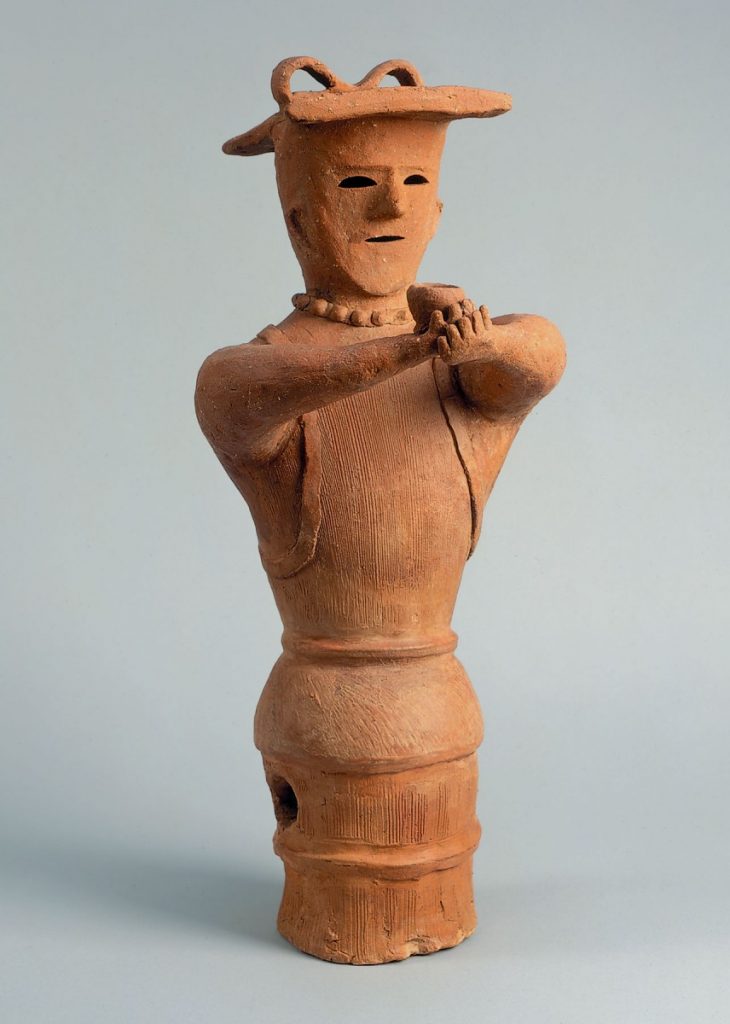
Shamaness Haniwa is located in the Robert F. Reiff Gallery of Asian Art on the second floor of the Museum. Audio guide length: 2 minutes, 13 seconds.
Link to final piece in highlights tour: Two-Way Mirror Curved Hedge Zig-Zag Labyrinth
Transcript
This sculpture portrays a woman with stylized, geometric facial features. It was made of terracotta, a rusty red baked clay, by an artisan working in the 6th century, during Japan’s Kofun period. This woman is 30 inches tall, about the height from the floor to mid-thigh. She is only sculpted from the waist up. From the waist down, this sculpture has a cylindrical base meant to be buried below ground.
This woman is constructed quite simply, with a flat, square hat, hollow, almond-shaped eyes, a triangular nose, a thin slit for a mouth, and no hair. She is wearing a sleeveless tunic with lining around the edges. She also wears a beaded necklace resembling semiprecious stone necklaces found in tombs from the same time period. Her round arms circle forward to present a bowl in a gesture of offering.
These accessories and bowl help us identify this woman as a shamaness. Chinese and Japanese histories describe Kofun period shamanesses not only as religious figures, but also as political and military leaders.
[If you would like further description and analysis of this sculpture, please continue listening or reading.]
In Japan’s Kofun Period, wealthy persons’ tombs were marked by hollow cylinders made from clay slabs called Haniwa, which literally means “clay circle.” Haniwa take the form of houses, animals, military equipment, warriors, and humans. These clay sculptures were believed to serve the deceased in the afterlife. Human haniwa have simple costumes and mask-like faces.
Shamaness haniwa are often shown seated or buried to the waist, perhaps indicating their close connection to the world of the deceased below them. This rare sculpture invites us to consider both the spiritual leadership that women have provided throughout history, as well as the ways in which we honor and serve the deceased.
Link to final piece in highlights tour: Two-Way Mirror Curved Hedge Zig-Zag Labyrinth